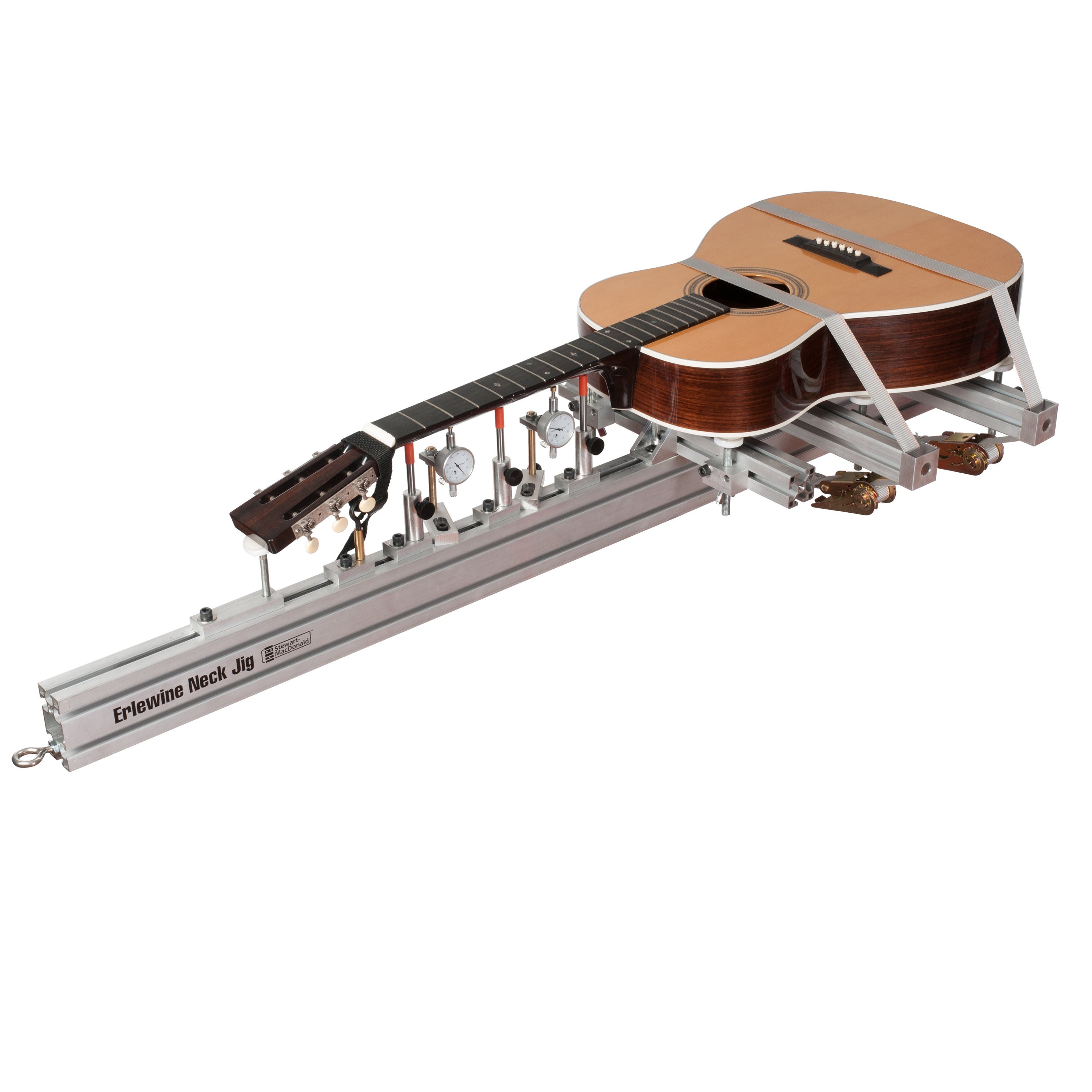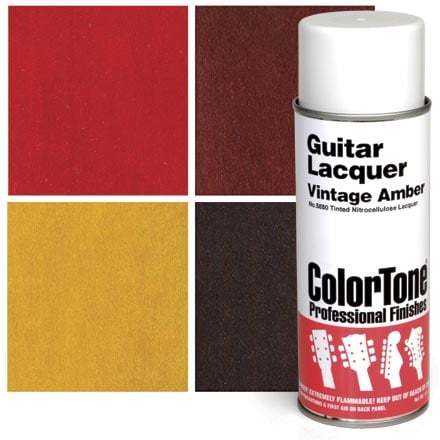Make a "stunt double" guitar body for benchtop work

Keep guitar bodies safe in their cases while this hunk o’wood takes all the knocks!
If you’ve ever scratched a customer’s guitar while doing fretwork, you know that terrible feeling.
You’re dressing frets, they’re looking great, you’re just about done... Life is good!
Then the tip of your 3-corner file puts a ding in the guitar body. Life is misery! Of course, this never happens to me, but I’ve heard about it. ;-)
To avoid that situation, I made myself a surrogate body.
At our shop, United Lutherie, Gene Imbody and I use the Erlewine Neck Jig for neck adjustments and fretwork. While we work, the jig holds the neck in the same curve as when it’s strung up and being played.

When the guitar has a bolt-on neck like a Fender, I don’t strap the body into the jig. Instead, I take the neck off and bolt it onto a special block of wood. The guitar body stays safely in its case while the neck is on this surrogate body block, where I can work on it freely. I get complete access for truss rod wrenches and fret files, and the body’s never in my way.
Even if you don’t use the neck jig, a surrogate body is handy. I’ve heard of people keeping a preshaped Strat body around and routing wood from around the neck pocket just for this purpose. But I prefer this shaped block I’ll show you below — it mounts on the neck jig, or you can clamp it in a vise instead.
When up-and-coming repairman Nik Gruber recently finished his apprenticeship with my shopmate Gene, I made Nik a going-away present of a surrogate body and I took pictures for Trade Secrets to show how you can make one for your shop.
Scrap wood is all you need.
I rounded up several plywood scraps that fit the dimensions of the online plan. I included a good chunk of alder that had been laying around forever, but that’s overkill — anything will do.

I glued up a wood sandwich, and clamped it overnight.

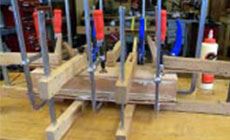
The next day, I cleaned up the edges on my belt sander, making sure my lump-o’-wood was nice and square.

I used our shop’s computer printer/copier to enlarge the plans. By taping two printouts together, I had an actual-size template to trace onto my blank.
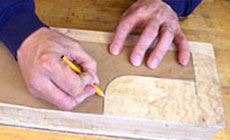
After bandsawing the rough shape, I cleaned it up on the belt sander. I marked and drilled all the holes indicated on StewMac’s plan.

Bingo!
That’s the surrogate body! If this stunt double is going to be a stand-in for the dangerous work, he should look the part: just for fun I sprayed a clownburst using Colortone tinted aerosols.
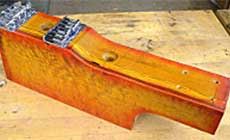
I installed a top loading guitar bridge and standard bass bridge. This stunt man is ready for action.
Dan Erlewine designed the surrogate body to give full access to the heel end truss rod adjustment of any bolt-on neck while it’s under string tension. The shape lets you work with lots of elbow room on the high frets, with no risk of damaging the body. (A slip of the file turns a fret job into a refinish job in about one second!)
It also means I can encourage my customers to leave their bodies at home:
It’s become commonplace for UPS to deliver us a small (inexpensive to ship) box containing a neck instead of a whole guitar. Shipping the guitar body is one more invitation to damage, too. This method only works for customers who are able to do their own basic setup work, but there are quite a few who can.

When you’re done with the fretwork you can set the surrogate up like you would a regular guitar to make sure all is well before sending it back to your customer. Here’s to you, Nik — enjoy using your Stunt Man Body Double!

Trade Secrets archive
Click to read past issues!

